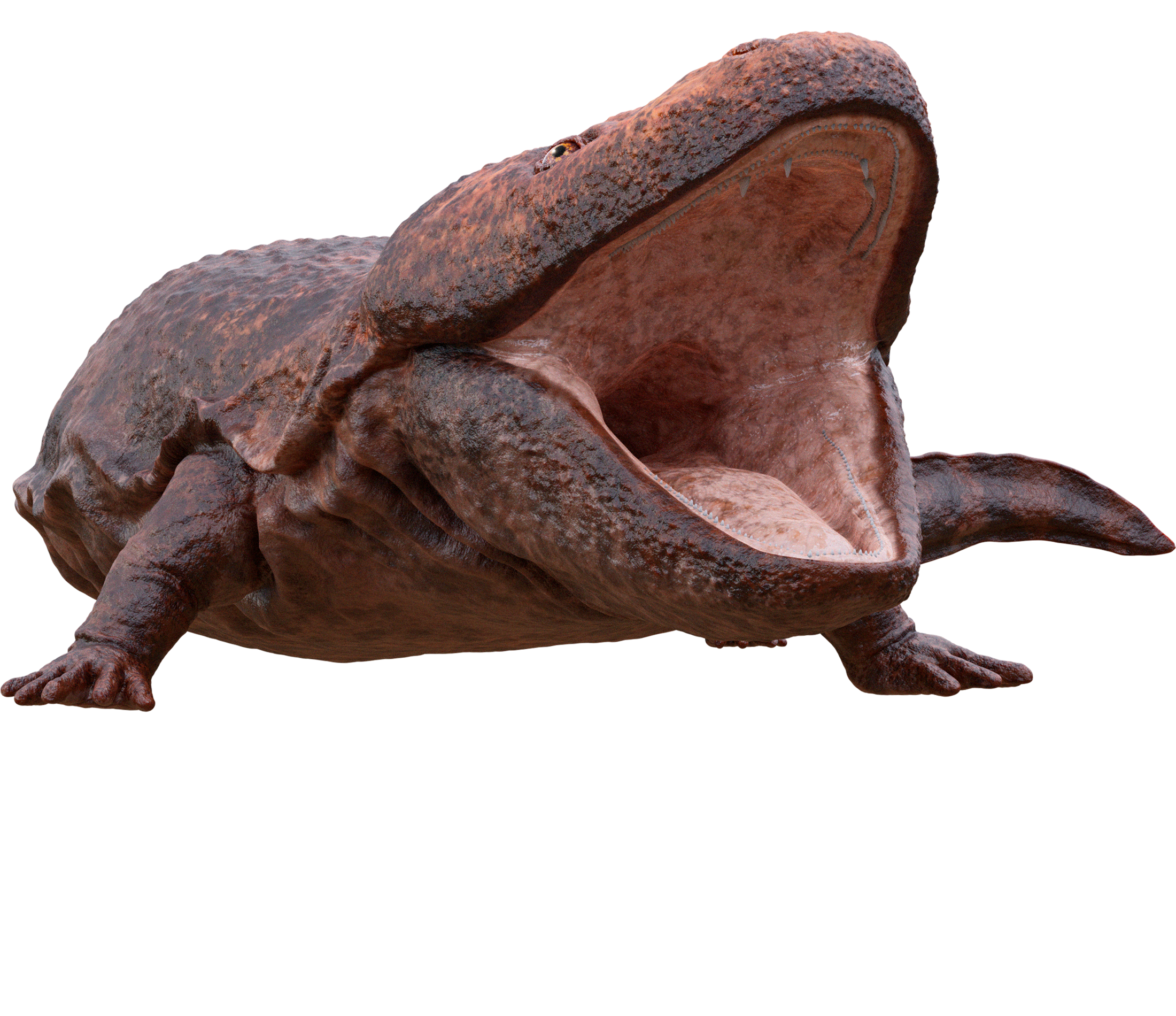The Enigmatic Apex Amphibian of Ischigualasto
Very little is currently known about this giant Argentine amphibian which would have resembled a large salamander and occupied a niche similar to modern crocodilians.
Introduction: For much of the Triassic, giant amphibians called temnospondyls filled ecological roles similar to modern crocodilians. Such was the case in the Late Triassic Ischigualasto Formation of Argentina, where the apex amphibian was Promastodonsaurus, named in 1963. Unfortunately, to this day, very little is known about this enigmatic beast. Hopefully more specimens will be found or more research will be done on it in the near future, thus shedding more light on this mysterious apex amphibian.
Discovery: Promastodonsaurus was discovered in Argentina’s Ischigualasto Formation and named in 1963 by the great Argentine paleontologist Jose Bonapart. Its name means “first teat tooth lizard” from Greek “próta”, meaning “first”, “mastos”, meaning "breast/nipple/teat", “odon” meaning "tooth" and “sauros”, meaning "lizard". The name is a reference to its close relative Mastodonsaurus (“teat tooth lizard”). Little is known about Promastodonsaurus, and more research on this enigma of an amphibian would be beneficial to our understanding of both Promastodonsaurus as well the fluvial (river) ecology of the Ischigualasto Formation.
Evolution and Description: Promastodonsaurus was a member of a group of giant amphibians called temnospondyls, which occupied large aquatic and semi-aquatic predator niches (like modern crocodilians) from the Carboniferous to the Early Cretaceous. Promastodonsaurus was in the family Mastodonsauridae, along with the more famous Mastodonsaurus. They would have had a similar lifestyle to modern crocodilians, except they almost never left the water, and being amphibians, they would have laid their eggs in water and hatched as tadpoles. They resembled giant salamanders, save unlike the smooth skin of modern amphibians at least some Mastodonsaurids would have had a scaly skin texture. While the exact size of Promastodonsaurus is unknown, its head measured about 45 cm (17.7 in) long, suggesting an animal somewhere in the vicinity of 2 m (6.6 ft) long, just slightly larger than a modern giant salamander.
Ecology: Promastodonsaurus was likely one of the top aquatic predators in its environment, which was a rich floodplain with abundant plants, including ferns, horsetails, and cycads, and towering above them, relatives of ginkgoes, monkey puzzles, and redwoods. The climate was warm and humid year-round and lush enough to support these plants, but rain was highly seasonal, and there was probably a distinct wet and dry season. Promastodonsaurus shared its river habitat with another smaller temnospondyl, Pelorocephalus, and the crocodile-like proterochampsid reptile Proterochampsa which was probably similar in size to Promastodonsaurus. Promastodonsaurus likely preyed on fish and other amphibians, but also may have hunted similar to crocodiles, ambushing small terrestrial prey that came to the water to drink. Terrestrial animals included early dinosaurs like Eoraptor, Herrerrasaurus, Eodromeus, and Panphagia, dinosaur-like silesaurids, mammal-like cynodonts, Dicynodonts like Ischigualastia, the early crocodylomorph Trialestes, and the giant “rausuchian” Saurosuchus. Most smaller animals would likely have been on Promastodonsaurus’s menu, as well as juveniles of larger species. The animal Promastodonsaurus feared the most may have been Saurosuchus, potentially reenacting a prey-predator relationship thought to have existed between the European Mastodonsaurus and Batrachotomus, close relatives of Promastodonsaurus and Saurosuchus respectively.
Extinction: The giant amphibians were successful for millions of years but began declining in the Triassic, likely due to competition from semi-aquatic reptiles like protorosuchids, proterochampsids, and phytosaurs in the Triassic, and true crocodyliforms in the Jurassic and onward. They also may have been less adaptable to the drier climate that came to characterize many ecosystems in the Late Triassic, being entirely bound to the water, if not physically, then reproductively. The combination of a drying Triassic climate and competition from semi-aquatic reptiles may have been what sent them into decline, becoming absent in many ecosystems where semi-aquatic reptiles were present, until the temnospondyls’ eventual extinction in the Early Cretaceous.
Promastodonsaurus FAQ
Promastodonsaurus size / How big was an Promastodonsaurus?
See weight and length.
Promastodonsaurus weight / How much did an Promastodonsaurus weigh?
Promastodonsaurus probably weighed in the ballpark of 60 kg (132 lbs), based on today’s Chinese giant salamanders, which are in a similar size range.
How long was Promastodonsaurus?
Promastodonsaurus was about 2 meters (6.6 ft) long, slightly longer than the largest amphibians of today, the Chinese giant salamander!
What did Promastodonsaurus eat?
Like many modern amphibians, Mastodonsaurus probably ate about any animal it could fit in its mouth. This likely included fish as well as small terrestrial animals.
What is Promastodonsaurus’s closest living relative?
The closest living relatives of Promastodonsaurus are modern amphibians, though Promastodonsaurus was on a separate branch of the amphibian family tree, so even modern amphibians are only very distantly related.
Promastodonsaurus family members / Promastodonsaurus family / What kind of animal was Promastodonsaurus?
Promastodonsaurus was in the family Mastodonsauridae, in the clade Capitosauria, in the clade Stereospondyli, which belonged to a large group of amphibians called Temnospndyli which were highly diverse and successful during the Carboniferous-Triassic periods, before declining starting in the Late Triassic and going extinct in the Early Cretaceous. Their evolutionary relationship to other amphibians is uncertain.
Where did Promastodonsaurus live? / Where was Promastodonsaurus found?
Promastodonsaurus lived in freshwater habitats in what is now Argentina.
When did Promastodonsaurus live?
Promastodonsaurus lived about 231.7-225 million years ago during the Late Triassic Period.
What does Promastodonsaurus mean? / Promastodonsaurus name meaning
Promastodonsaurus means “first teat-toothed lizard”, named in reference to its German relative Mastodonsaurus. Despite its name, however, Promastodonsaurus actually lived after Mastodonsaurus.

